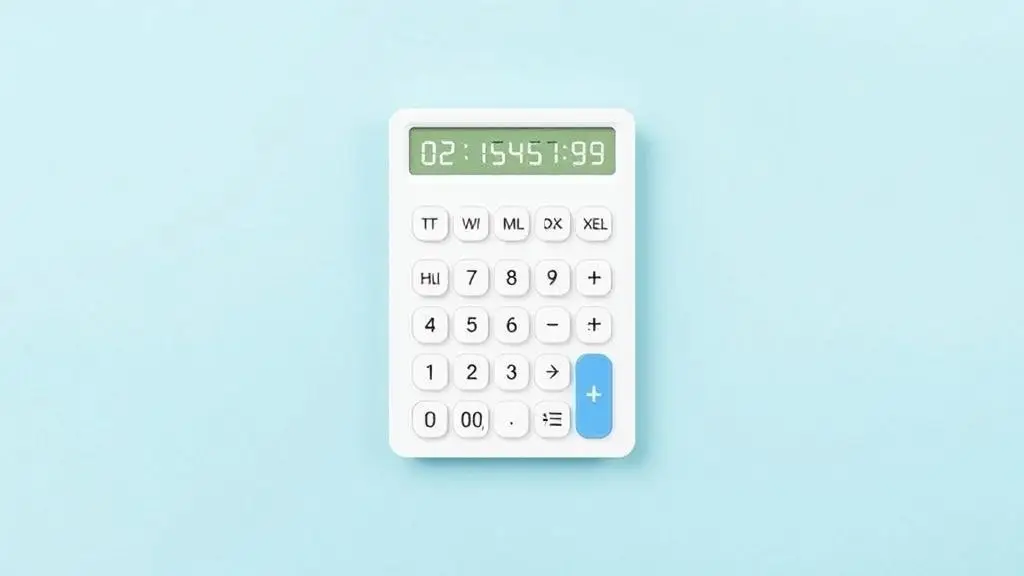Time Clocks That Calculate Hours
1. Introduction to Time Clocks That Calculate Hours
Time clocks that calculate hours are essential tools for businesses to track employee work hours, manage overtime, and streamline payroll processing. These systems eliminate manual timesheet errors, ensure compliance with labor laws, and improve workforce productivity.
Key Focus Keywords in First 5% of Content:
- Time clocks that calculate hours
- Automated hour calculation
- Employee time tracking
- Workforce management systems
- Payroll integration for time clocks
With the rise of remote work and flexible schedules, businesses need reliable time clocks that automatically calculate hours to maintain accuracy and efficiency in workforce management.
2. Why Automated Hour Calculation is Essential for Businesses
Manual time tracking is prone to errors, leading to payroll discrepancies, compliance risks, and employee dissatisfaction. Here’s why businesses are switching to time clocks that calculate hours automatically:
✔ Eliminates Human Error – No more miscalculations in timesheets.
✔ Reduces Payroll Processing Time – Automates hour calculations for faster payroll.
✔ Ensures Labor Law Compliance – Tracks overtime, breaks, and PTO accurately.
✔ Improves Accountability – Prevents buddy punching and time theft.
✔ Supports Remote Workforce – Cloud-based systems track hours from anywhere.
Industries like healthcare, construction, retail, and manufacturing benefit significantly from automated time clocks that calculate hours.
3. Types of Time Clocks That Calculate Hours
A. Biometric Time Clocks
- Use fingerprint or facial recognition for secure clock-in/out.
- Best for high-security environments.
B. Mobile & App-Based Time Clocks
- Employees clock in via smartphone apps.
- Ideal for remote teams and field workers.
C. Web-Based Time Clocks
- Accessible via browser, no hardware needed.
- Suitable for hybrid workforces.
D. Punch Card & RFID Time Clocks
- Traditional systems using badges or cards.
- Cost-effective for small businesses.
E. AI-Powered Smart Time Clocks
- Use AI to detect attendance patterns and anomalies.
- Advanced analytics for workforce optimization.
4. Key Features of Advanced Time Clock Systems
When choosing a time clock that calculates hours, look for:
✅ Automatic Overtime Calculation – Complies with FLSA and state laws.
✅ Break & Lunch Tracking – Ensures proper rest periods.
✅ Geofencing & GPS Tracking – Verifies employee location for remote work.
✅ Real-Time Reporting – Generates instant hours worked reports.
✅ Payroll & HR Integration – Syncs with QuickBooks, ADP, Gusto.
5. How Time Clocks Calculate Hours Accurately
Modern time clocks that calculate hours use algorithms to:
- Record Clock-In/Out Times – Timestamps every shift start and end.
- Subtract Breaks – Deducts unpaid lunch breaks automatically.
- Calculate Total Hours Worked – Sums daily/weekly hours.
- Apply Overtime Rules – Detects when employees exceed 40 hours/week.
- Export to Payroll – Transfers data seamlessly for error-free paychecks.
Example Calculation:
- Clock-In: 9:00 AM
- Clock-Out: 5:30 PM
- Lunch Break: 30 mins (unpaid)
- Total Hours Worked: 8 hours

6. Step-by-Step Guide to Using a Time Clock for Hour Calculation
Step 1: Set Up the Time Clock System
- Choose hardware or software-based.
- Configure company policies (overtime, breaks, rounding rules).
Step 2: Enroll Employees
- Add team members to the system.
- Assign badges, PINs, or biometrics.
Step 3: Train Employees
- Teach staff how to clock in/out properly.
- Explain break policies.
Step 4: Monitor & Adjust
- Review timesheet reports weekly.
- Fix discrepancies early.
Step 5: Integrate with Payroll
- Sync hours with accounting software.
- Process payroll faster.
7. Top Time Clock Systems That Calculate Hours
A. Buddy Punch
✔ Best for small businesses
✔ Mobile app & geofencing
B. TSheets by QuickBooks
✔ Great for construction & field teams
✔ GPS tracking
C. uAttend
✔ Affordable biometric & cloud-based
✔ No contracts
D. TimeClock Plus
✔ Enterprise-level workforce management
✔ Advanced compliance tools
E. Homebase
✔ Free plan for small teams
✔ Scheduling + time tracking
8. Common Mistakes in Hour Tracking & How to Avoid Them
❌ Ignoring Time Theft – Employees exaggerating hours.
✅ Solution: Use biometric or geofenced clocks.
❌ Not Tracking Breaks Properly – Leads to wage disputes.
✅ Solution: Enforce automated break deductions.
❌ Manual Data Entry Errors – Typos in timesheets.
✅ Solution: Use fully automated systems.
9. Integrating Time Clocks with Payroll & HR Systems
Seamless integration with payroll software ensures:
✔ Faster Payroll Processing – No manual data transfer.
✔ Tax Compliance – Accurate wage & hour records.
✔ Employee Self-Service – Staff can view their hours.
Popular integrations:
- QuickBooks
- ADP
- Paychex
- Gusto
10. Frequently Asked Questions (FAQs) About Time Clocks That Calculate Hours
Q1. Are time clocks that calculate hours legally required?
- No, but they help comply with FLSA and state labor laws.
Q2. Can time clocks track PTO and sick days?
- Yes, advanced systems automate PTO accruals.
Q3. How do time clocks prevent buddy punching?
- Biometrics, facial recognition, and PIN codes ensure only the employee can clock in.
Q4. What’s the best time clock for remote workers?
- Mobile apps with GPS tracking (e.g., TSheets, Homebase).
11. Conclusion & Best Practices for Implementing Time Clocks
Time clocks that calculate hours are game-changers for payroll accuracy, compliance, and productivity. Follow these best practices:
✅ Choose a system that fits your business size.
✅ Train employees properly.
✅ Integrate with payroll software.
✅ Regularly audit time records.
Investing in the right time clock system saves money, reduces errors, and keeps employees happy.
